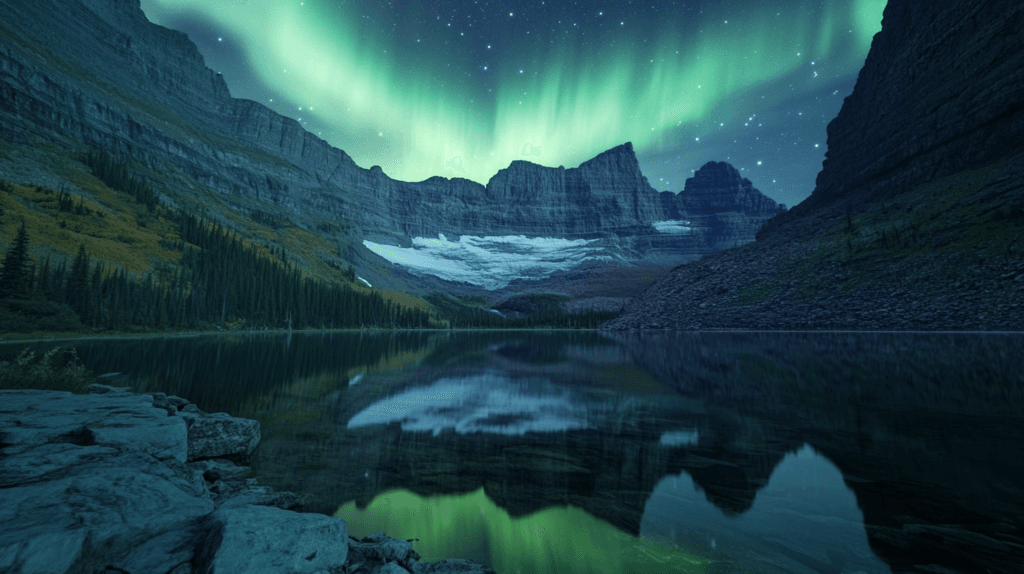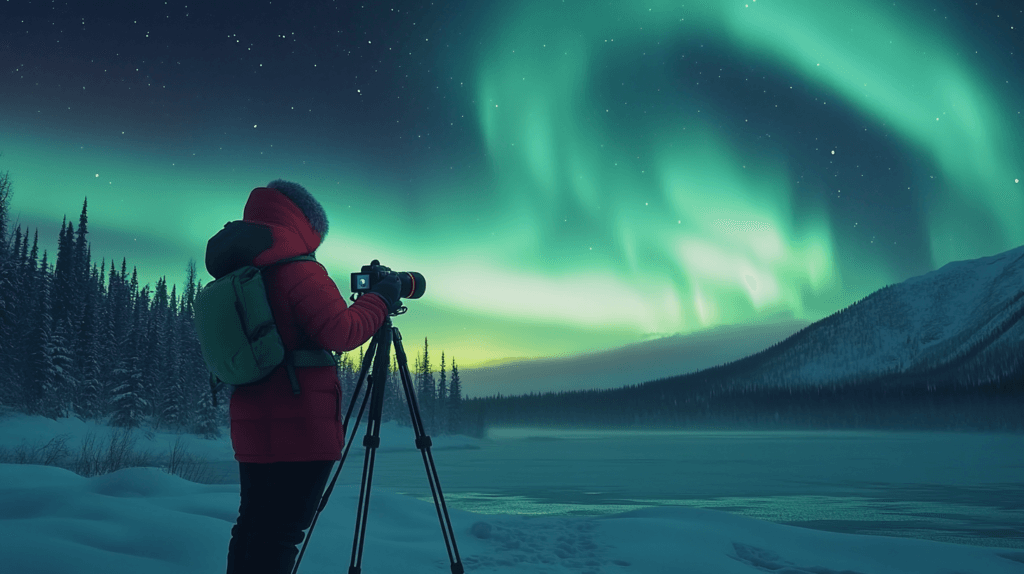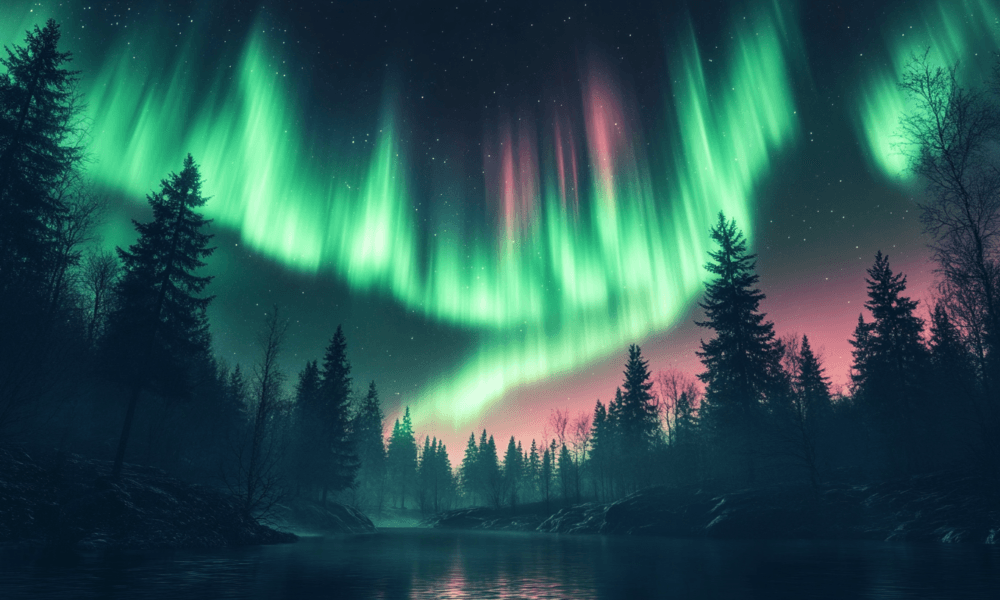A Rare Sight: How to Experience the Northern Lights in the U.S. in 2024
The northern lights, also known as the aurora borealis, are one of nature’s most spectacular phenomena. The dancing waves of green, pink, and purple light illuminate the sky, creating an ethereal spectacle that has fascinated people for centuries. While the best views of the northern lights are usually found in the Arctic regions, certain parts of the United States also offer opportunities to witness this rare natural beauty. In 2024, conditions are expected to be favorable for viewing the northern lights in the U.S., and this guide will help you make the most of your aurora-chasing adventure.
What Are the Northern Lights?
The northern lights are caused by solar particles colliding with Earth’s magnetic field. When these charged particles interact with gases in the atmosphere, they create a shimmering display of lights in the night sky. The colors of the aurora depend on the types of gases involved, with green being the most common, followed by pink, violet, and sometimes even shades of red and blue.
The phenomenon occurs most frequently near the magnetic poles, which is why the aurora borealis is typically associated with places like Norway, Sweden, Finland, and Canada. However, during periods of intense solar activity, the lights can be visible much further south, including parts of the United States.
Best Times to View the Northern Lights in the U.S. in 2024
To experience the northern lights in 2024, timing is key. The best chances to witness this phenomenon in the U.S. occur during periods of high solar activity, often referred to as the solar maximum. This is when the sun’s magnetic field is most active, increasing the likelihood of auroras appearing at lower latitudes.
In 2024, solar activity is predicted to be at a high point, which means that northern parts of the U.S. may have more opportunities to see the aurora borealis. The ideal time to view the northern lights is during the winter months—from late September to March—when the nights are longer and darker, providing the best conditions for visibility. Additionally, new moon phases will offer darker skies, enhancing the aurora’s brightness.
Top Locations to See the Northern Lights in the U.S.
1. Alaska
Alaska is by far the best place in the U.S. to experience the northern lights, as it is situated in the auroral zone. Areas like Fairbanks and Denali National Park offer excellent conditions for viewing. Fairbanks, in particular, is known for its aurora borealis tours, which include guided trips to remote locations away from city lights.
- Fairbanks: One of the most reliable locations for northern lights viewing, Fairbanks offers clear skies, tours, and an abundance of amenities. Travelers can visit the nearby Chena Hot Springs Resort, where they can relax in a warm pool while watching the lights dance above.
- Denali National Park: Away from city lights, Denali National Park is another great spot for viewing the aurora. Its vast wilderness offers unobstructed views and a true connection with nature.
2. Northern Minnesota
The northern regions of Minnesota, particularly near the Boundary Waters Canoe Area Wilderness and Voyageurs National Park, offer great opportunities for northern lights viewing. The area’s pristine lakes and dark skies make it ideal for catching the aurora’s reflections on water, adding to the magic of the experience.
3. Michigan’s Upper Peninsula
Michigan’s Upper Peninsula, especially places like Marquette and the Keweenaw Peninsula, provides excellent viewing opportunities. During winter, Lake Superior acts as a mirror, reflecting the aurora and creating a mesmerizing double display. The secluded nature of this area also means less light pollution, making it easier to spot the lights.
4. Idaho and Montana
The rugged landscapes of Idaho and Montana are ideal for aurora viewing, especially Glacier National Park and the area around Sandpoint, Idaho. These locations offer open horizons and minimal light pollution, making them great places to see the northern lights when solar activity is high.
5. Maine
In the northeastern U.S., Maine offers some good locations for northern lights viewing. The vast and dark skies of Aroostook County and Acadia National Park provide opportunities to witness the aurora without having to travel too far. Aroostook County, in particular, offers expansive rural areas that are perfect for avoiding light pollution.

Tips for Experiencing the Northern Lights
1. Check the Forecast
The northern lights are notoriously unpredictable, but there are resources available to help you improve your chances of seeing them. Websites like SpaceWeather.com and apps like My Aurora Forecast provide up-to-date aurora predictions based on solar activity. Look for KP index values of 5 or higher, as these indicate a good chance of seeing the northern lights at lower latitudes.
2. Choose a Dark Location
To maximize your chances of seeing the aurora, find a location far away from artificial lights. Light pollution from cities can diminish the brightness of the northern lights, so try to go to a remote area with as little artificial light as possible.
3. Stay Warm
Viewing the northern lights often means spending long periods outdoors in cold conditions, especially in places like Alaska or northern Minnesota. Dress in layers, bring a thermos of hot drinks, and make sure you have insulated gloves, hats, and boots to stay comfortable.
4. Bring the Right Camera Equipment
Capturing the beauty of the northern lights requires a bit of preparation. A DSLR camera with manual settings, a tripod, and a wide-angle lens are all essential for getting the perfect shot. Set your camera to a high ISO setting, use a long exposure time (typically 5-30 seconds), and adjust the focus to infinity to capture the dancing lights in all their glory.
5. Be Patient
The aurora can be unpredictable and may take hours to appear, so patience is key. Settle in for a long night, and make the experience enjoyable by bringing snacks, hot drinks, and maybe even some music to pass the time while you wait.

The Science Behind the Aurora Borealis
The aurora borealis is the result of the sun’s charged particles interacting with Earth’s magnetic field. During periods of intense solar activity, known as solar storms, the sun releases a significant number of electrons and protons, which travel through space and are drawn to the magnetic poles. When these particles collide with the gases in Earth’s atmosphere—primarily oxygen and nitrogen—they emit light, which we see as the northern lights.
- Colors of the Aurora: The most common color of the aurora is green, caused by oxygen molecules approximately 60 miles above Earth. Red auroras are less common and occur at higher altitudes, while purple and blue hues come from nitrogen.
- Geomagnetic Storms: The most vivid auroras occur during geomagnetic storms, which are caused by large bursts of solar wind and magnetic fields interacting with Earth’s magnetosphere. During such times, auroras can be visible much farther south than usual, even reaching the northern United States.
Conclusion
Experiencing the northern lights is a magical event that should be on everyone’s bucket list. In 2024, the heightened solar activity will present more opportunities for people in the United States to witness this incredible natural display. By choosing the right locations, keeping an eye on the aurora forecast, and preparing properly for your adventure, you can increase your chances of seeing the northern lights and creating memories that will last a lifetime.
Whether you are in the wilds of Alaska, the secluded lakes of Michigan’s Upper Peninsula, or the rugged mountains of Montana, the northern lights are sure to leave you in awe. Prepare for the adventure, stay patient, and enjoy one of nature’s most awe-inspiring shows.




No Comment! Be the first one.